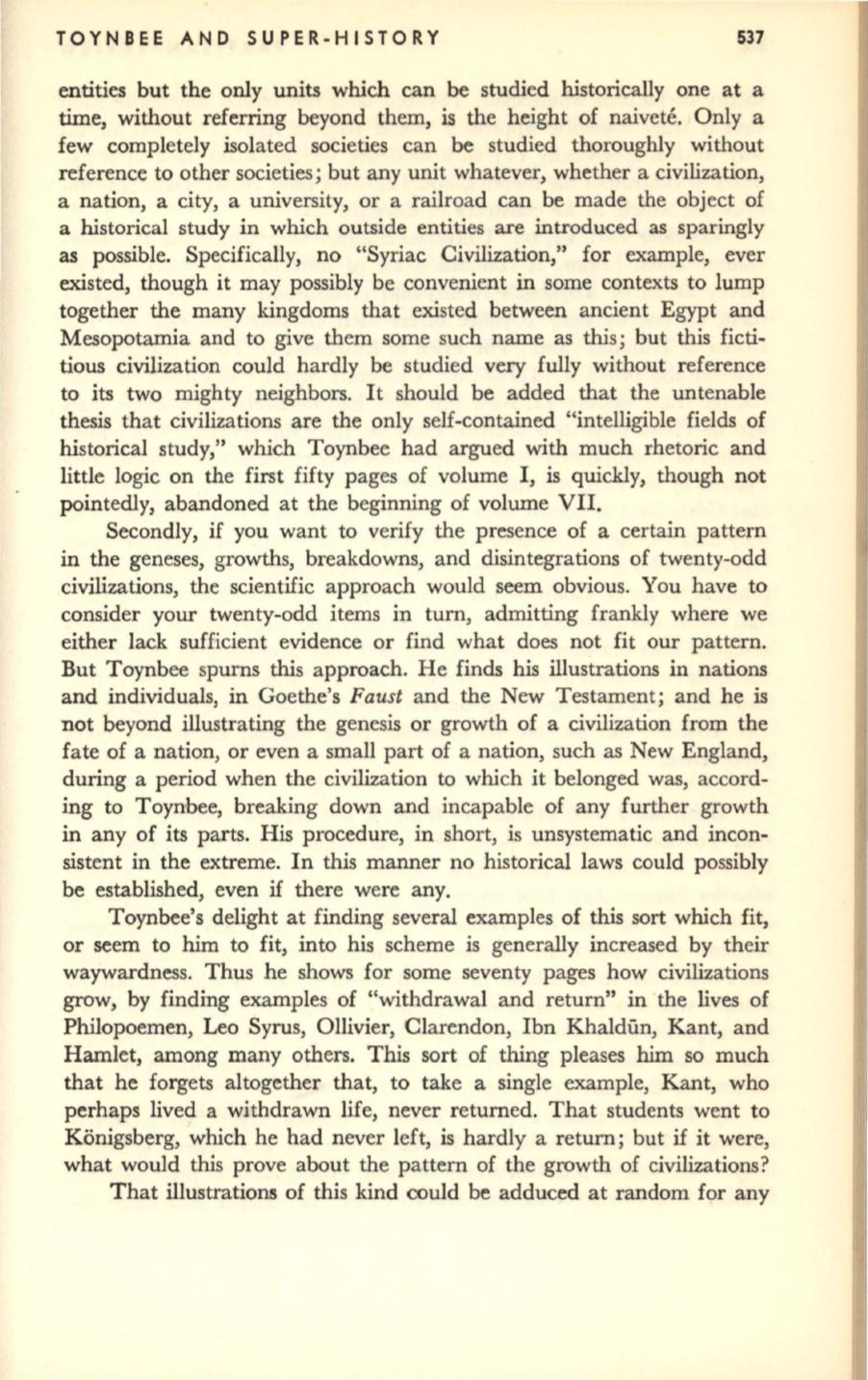
TOYNBEE AND SUPER-HISTORY
537
entities but the only units which can be studied historically one at a
time, without referring beyond them, is the height of naivete. Only a
few completely isolated societies can be studied thoroughly without
reference to other societies; but any unit whatever, whether a civilization,
a nation, a city, a university, or a railroad can be made the object of
a historical study in which outside entities are introduced as sparingly
as possible. Specifically, no "Syriac Civilization," for example, ever
existed, though it may possibly be convenient in some contexts to lump
together the many kingdoms that existed between ancient Egypt and
Mesopotamia and to give them some such name as this; but this ficti–
tious civilization could hardly be studied very fully without reference
to its two mighty neighbors. It should be added that the untenable
thesis that civilizations are the only self-contained "intelligible fields of
historical study," which Toynbee had argued with much rhetoric and
little logic on the first fifty pages of volume I, is quickly, though not
pointedly, abandoned at the beginning of volume VII.
Secondly, if you want to verify the presence of a certain pattern
in the geneses, growths, breakdowns, and disintegrations of twenty-odd
civilizations, the scientific approach would seem obvious. You have to
consider your twenty-odd items in turn, admitting frankly where we
either lack sufficient evidence or find what does not fit our pattern.
But Toynbee spurns this approach. He finds his illustrations in nations
and individuals, in Goethe's
Faust
and the New Testament; and he is
not beyond illustrating the genesis or growth of a civilization from the
fate of a nation, or even a small part of a nation, such as New England,
during a period when the civilization to which it belonged was, accord–
ing to Toynbee, breaking down and incapable of any further growth
in any of its parts. His procedure, in short, is unsystematic and incon–
sistent in the extreme. In this manner no historical laws could possibly
be established, even if there were any.
Toynbee's delight at finding several examples of this sort which fit,
or seem to him to fit, into his scheme is generally increased by their
waywardness. Thus he shows for some seventy pages how civilizations
grow, by finding examples of "withdrawal and return" in the lives of
Philopoemen, Leo Syrus, Ollivier, Clarendon, Ibn Khaldiin, Kant, and
Hamlet, among many others. This sort of thing pleases him so much
that he forgets altogether that, to take a single example, Kant, who
perhaps lived a withdrawn life, never returned. That students went to
Konigsberg, which he had never left, is hardly a return; but if it were,
what would this prove about the pattern of the growth of civilizations?
That illustrations of this kind could be adduced at random for any


